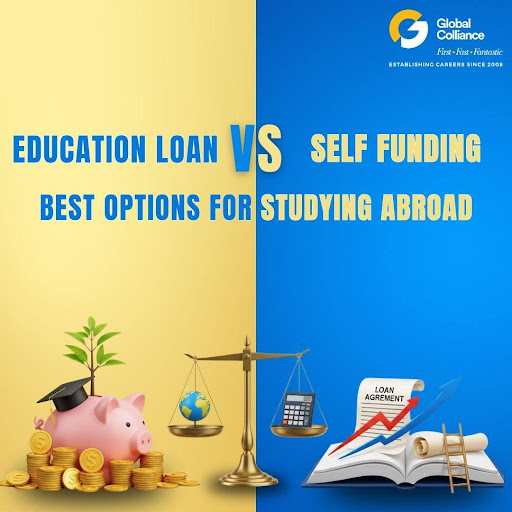- Home
- blog
Study Gap Accepted in the USA
- Home
- Blog
Study Engineering in Dubai: Top Universities & Career Scope
Table of Contents
Introduction
What Is a Study Gap and Why It Matters
A study gap is any period of time lasting from months to years during which you pause formal education before beginning a new program. In India continuity usually affects admission decisions. Whereas US admission offices prefer life experiences and add to an overall student’s profile.
Internships, travel, and volunteering can help you develop communication, leadership and technical skills during free time.
- Personal development: overcoming difficulties during a gap, health issues or family duties show perseverance.
- Differentiation: A clarified gap narrative defines you from peers with consistent academic histories.
Unexplained or improperly described gaps have raised concern about your commitments and readiness. The goal is to present your gap effectively demonstrating how enhanced skills are important to your chosen field of study.
Study Gap Durations: Undergraduate vs Graduate
Undergraduate programs
Most US universities provide a typical allowance of 1 to 2 years. Ivy League and other top tier universities usually recommend gaps for less than 1 year, unless offset by outstanding performance. Public universities clearly publish policy permitting up to two years without penalty. Why 1-2 years’ work, prepare for major tests like SAT, PTE, TOEFL, IELTS. Provides opportunities to intern in relevant industries or support community factors. Gives protection for personal situations, health and family with proper documentation.
Graduate programs
Master’s and professional degrees like MBA MPA usually need 2-5 years of job experience to enhance your profile. Research intensive PHD/MS, up to 8 years are allowed if you maintain academic participation like publication and presentations. Top private institutions: evaluating gaps individually, professional or academic expertise can be crucial.
Why extended gaps are accepted
Work experience between degrees. Work experience among major courses usually defines research interests and sharpens technical skills and shows leadership qualities that graduate programs strongly value.
Valid Reasons for Study Gaps
Admission officers may not see all the gaps as equal. The most suitable reasons include:
Educational preparation
Intensive exam preparation for GRE, GMAT, TOEFL and IELTS. Supplemental courses to eliminate backlogs or improve basics.
Professional engagement
Full-time work in subjects of interest. Internships that offer industry knowledge. Entrepreneurial ideas or freelance projects.
Personal and family situations
Verified medical treatment or recovery. Providing care and duties for family members.
Cultural and personal development
Planned volunteer work or social campaigns. Cultural exchange programs and travels that expands global perspectives.
Documentation & Proof Requirements
Clear and convincing documentation is crucial for justifying your study gap, prepare as follows:
Document | Purpose |
Gap Certificate | A notarized affidavit describing the gap’s duration and explanation. |
Employment/Internship Letters | Details: role, duration and responsibilities. |
Volunteer Service Records | Certificates or letters from organizations or NGOs. |
Course Completion Certificates | MOOCs, language classes and professional workshops. |
Medical Reports | Doctors’ recommendations and hospital reports (if applicable). |
Pack your documents
Arrange sequentially in a single portfolio. Label each thing with dates, roles and results. Keep both paper and electronic copies of university and visa applications.
F-1 Visa Rules and Interview Preparation
Getting an F1 student visa with a study gap depends on three factors:
Academic purpose
Align your gap activities to your selected US program. Demonstrate how internships and projects improved relevant abilities.
Financial preparedness
Please include bank statements, scholarship award letters and evidence of income. Show that you can cover both tuition and living expenses.
Strong ties with India
Highlight family, property and employment opportunities that will allow you to return after finishing studies.
Common interview questions and best practices
Question
Best practice
Why did you take a break after your last degree.
Be honest, clear and link the gap to your goals.
What did you achieve during this period.
Share measurable outcomes like projects and internships.
How will this experience benefit your studies in the US.
Describe the direct connection between curriculum and research.
Preparation tips
Practice answers that are brief and consistent about your SOP. Bring supporting documents if needed. Maintain cool manners and show your dedication to study.
US Universities Accepting Gap-Year Applicants
Many top US universities either provide regular gap year programs or Analyze gaps in a flexible manner. The following is a list of universities and their gap policies:
University | Program | Gap policy highlights |
Princeton University | Novo Gratz Bridge Year | 9 months of stipend supported hands-on training. |
Tufts University | 1+4 Bridge Year | Global volunteering or studying abroad before enrollment. |
Harvard University | Deferral Option | Enrichment programs can be postponed up to one year. |
Stanford University | Case-by-case Review | Research and internships are valuable in gap evaluation. |
UC Berkeley | General Admission | Up to a two-year gap, online learning enrollment. |
UNC Chapel Hill | Global Gap Fellowship | Funding and mentoring for self-oriented projects. |
Tips to Overcome Study Gaps
Maintain academic momentum
Register suitable online courses in courses and TEDx. Publish blogposts, articles and white papers on your field.
Boost test scores
Aiming for TOEFL ≥ 90, iBT or IELTS ≥ 6.5. For GRE/GMAT, join preparatory classes or hire tutors.
Expand your network
Connect with alumni, professors and current students using LinkedIn and webinars. Seek mentoring and informative interviews.
Enhance your profile
Get a strong letter of recommendation for supervisors or academics. Describe achievements such as increasing sales by 30% or managing a 5-lakh project.
Prepare for visa process
Arrange the following documents: I-20, SEVIS receipt, bank statements and gap certificates. Practice mock interviews focus on gap related topics.
Final Verdict: Turning Your Gap into an Advantage
When properly planned and established a research gap can be transformed from an apparent disadvantage into a competitive differentiator. US institutions value applicants with broad experiences, perseverance and a clear sense of purpose. You may establish yourself as a mature, motivated, well-prepared applicant by linking your gap activities with your academic goals obtaining strong documentation and practicing honest communication.
Final Tips
A well-presented study gap is the most valuable asset in the highly competitive environment of US admissions.
- Plan in advance: Identify which gap activities will be compatible with your academic and professional goals.
- Document everything: Gathering certifications, letters and records in preparation.
- Create an appealing SOP: Address the gap directly, focus on progress and relate to your chosen program.
- Master your visa interview: Practice communicating clear, consistent messages and confidently presenting supporting papers.
- Choose the perfect university: Look into gap year rules and select universities that recognize your unique experiences.
For personalized assistance, contact our Canada student visa consultant in Vadodara to arrange your study abroad paperwork and interview preparation.
Conclusion
Accept your gap year as an intentional decision that enhances your talents and perspectives. With smart planning and honest story telling you break into studies will no longer be an obstacle, but instead the path leads to success in the United States.
If you require specialized assistance, our USA student visa consultant Ahmadabad will help you to do the F1 visa procedure successfully.
- You May Also Like


Masters in Cybersecurity Abroad: Best Career Options, Top Universities & Salary Guide
October 31, 2025




